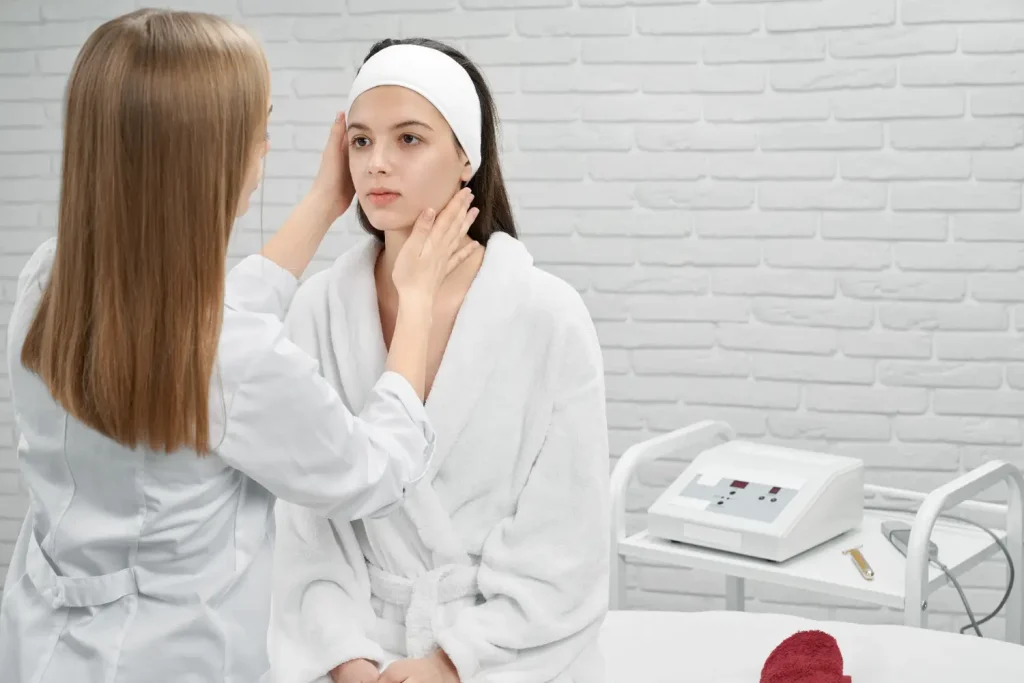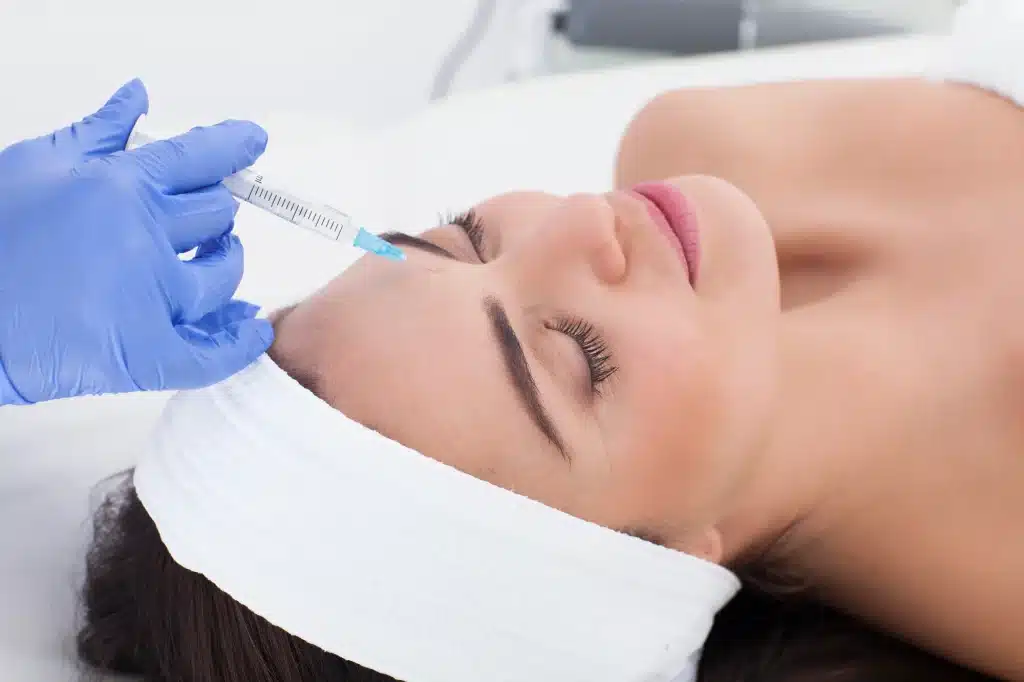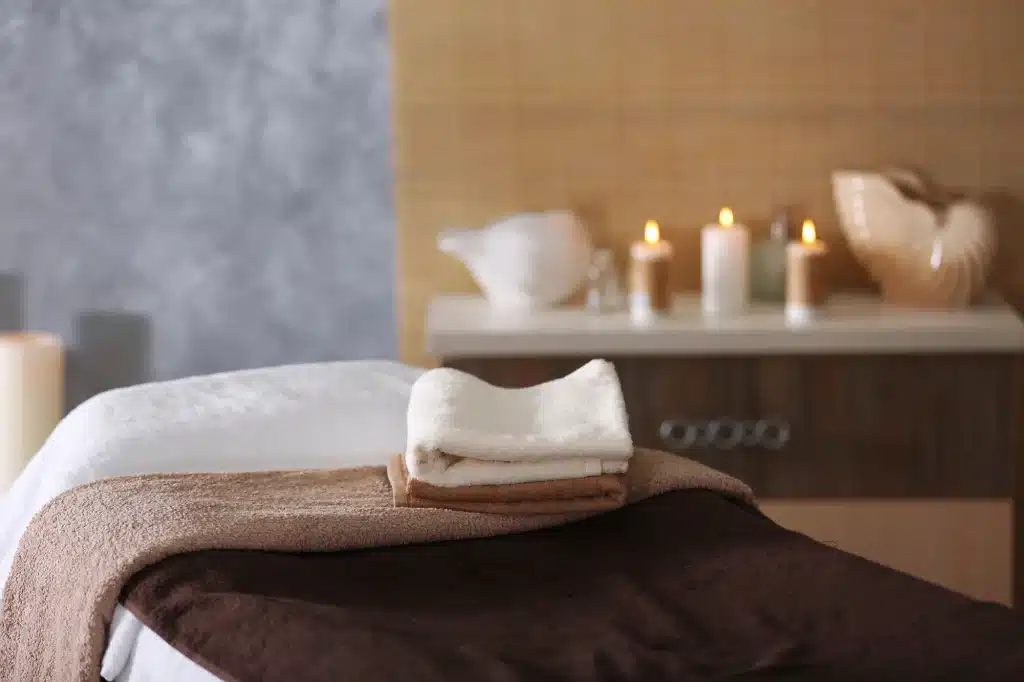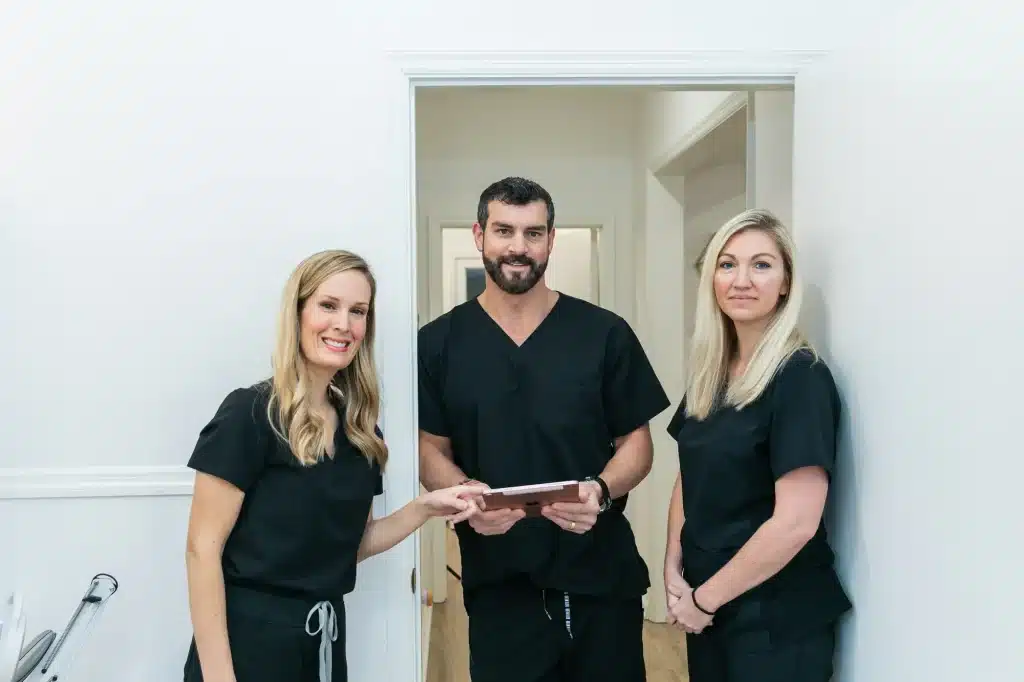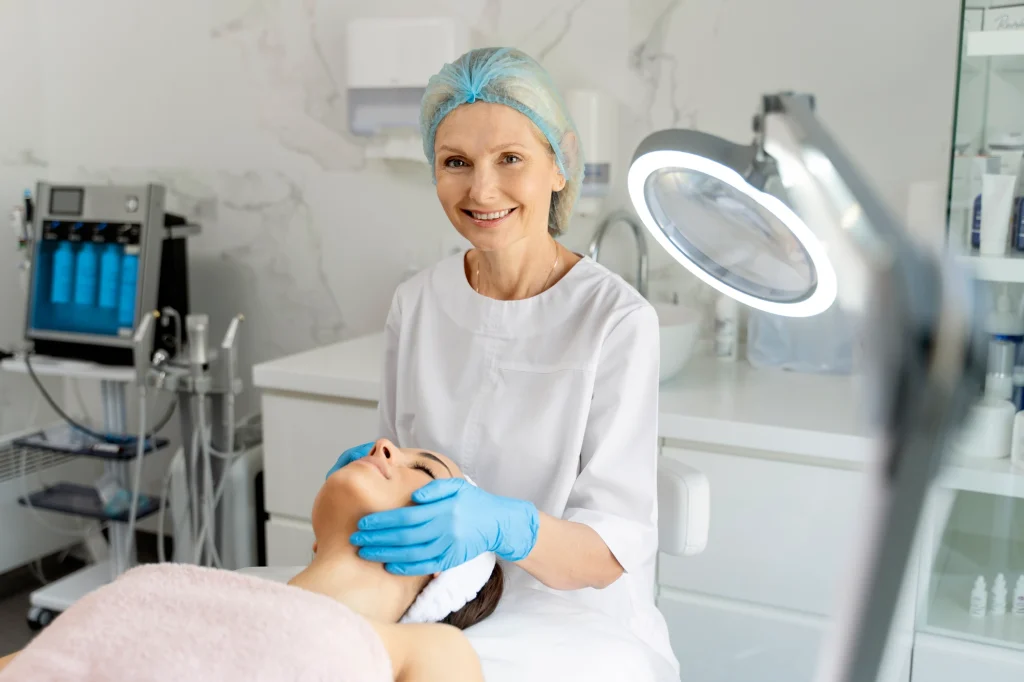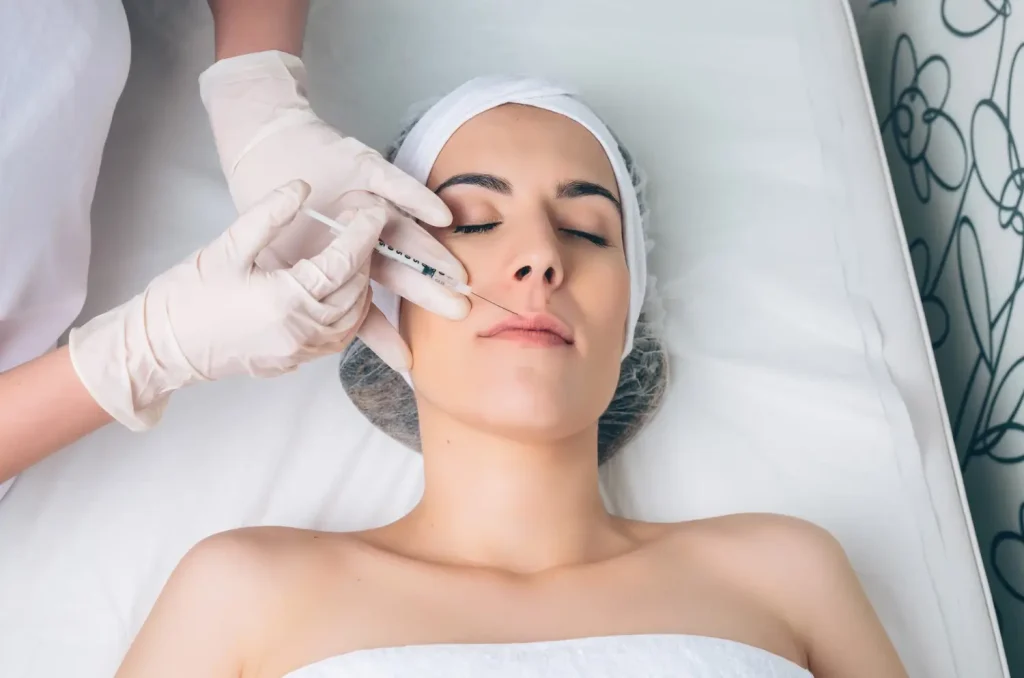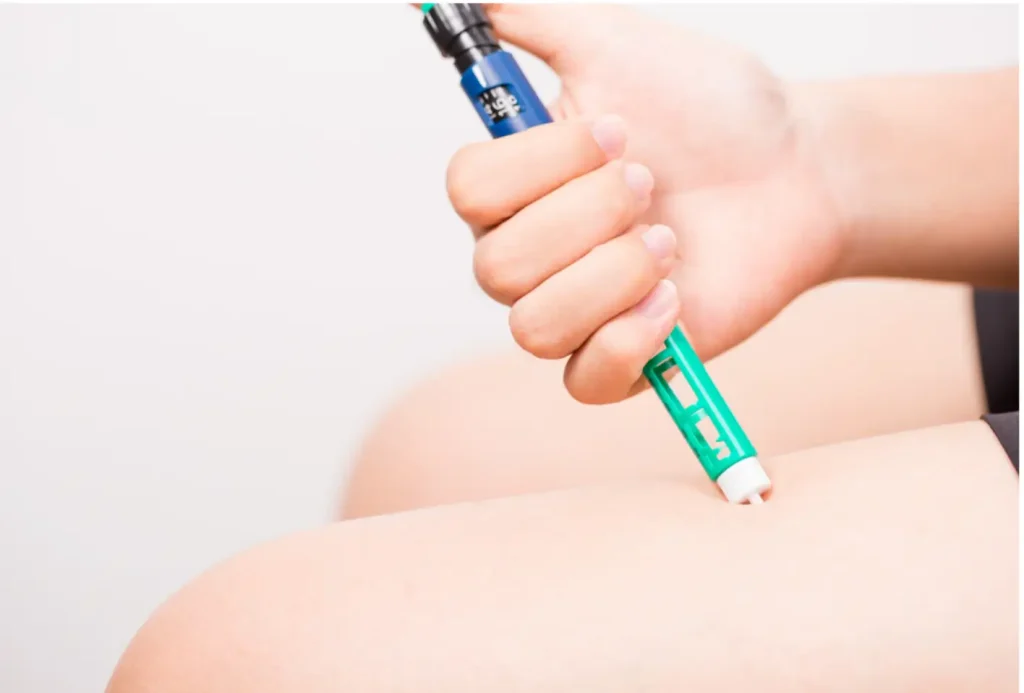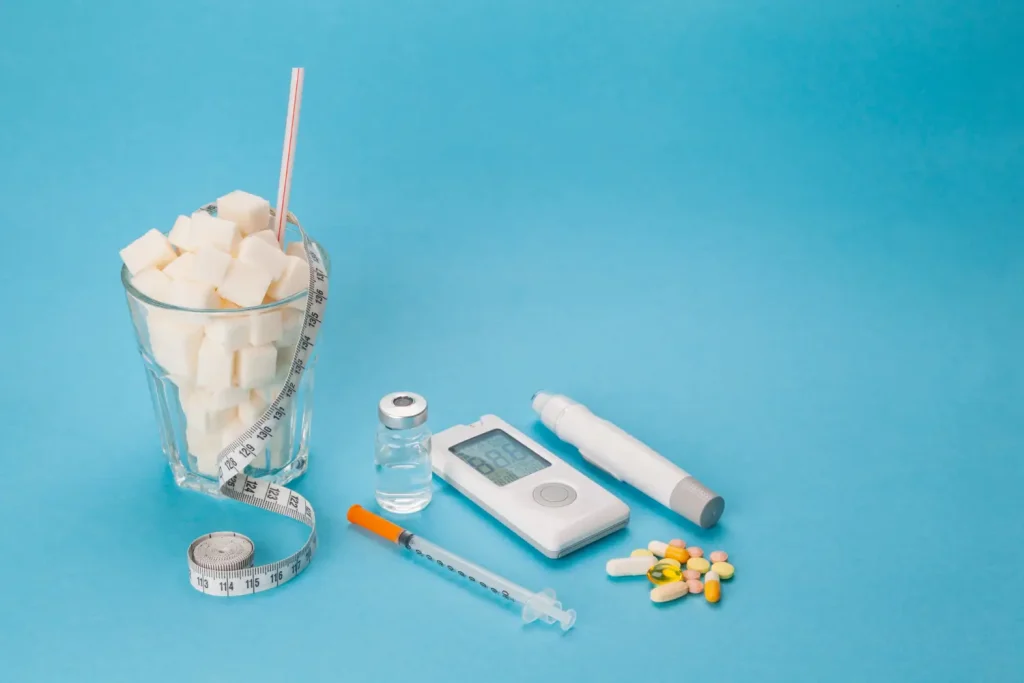For years, hyaluronic acid (HA) products have been the standard for facial rejuvenation because of their safety, reversibility, and immediate results.
Expectations have shifted. Patients today expect more than temporary volume correction. They want gradual, natural improvement in skin quality and structure that lasts.
This shift has led to the rise of biostimulatory or next-generation fillers — agents that trigger collagen and elastin production rather than simply occupy space. The three most widely used are poly-L-lactic acid (PLLA), calcium hydroxyapatite (CaHA), and polycaprolactone (PCL).
Each material works differently.
- PLLA induces fibroblast activation through controlled inflammation.
- CaHA provides immediate volumization followed by collagen stimulation as its microspheres degrade.
- PCL creates a long-lasting scaffold that promotes neocollagenesis and soft-tissue regeneration over time.
These products represent a new philosophy in aesthetic practice — one focused on regeneration instead of replacement.
This article reviews their mechanisms, clinical evidence, safety considerations, and practical use to help practitioners integrate next-generation fillers confidently and effectively.
Mechanisms of Action
Next-generation fillers differ from traditional hyaluronic acid products in one essential way.
Instead of simply adding volume, they stimulate the body’s own regenerative processes.
Each material—PLLA, CaHA, and PCL—has a unique mechanism that leads to long-term collagen production and tissue remodeling.
Poly-L-Lactic Acid (PLLA)
PLLA is a biodegradable synthetic polymer derived from lactic acid.
It works by triggering a mild inflammatory response that activates fibroblasts to produce new collagen, primarily type I.
This process occurs gradually over several weeks. The filler itself does not provide immediate volume; rather, it serves as a scaffold for new tissue formation.
Over time, PLLA particles are metabolized into carbon dioxide and water, leaving behind a network of newly synthesized collagen that restores volume and improves skin texture.
Studies show effects can last up to 24 months or longer after a series of treatments.
Calcium Hydroxyapatite (CaHA)
CaHA consists of microspheres of calcium and phosphate—minerals naturally found in bone—suspended in a gel carrier.
It provides immediate mechanical lift while the carrier gel creates a supportive matrix for new collagen deposition.
As the gel is absorbed, fibroblasts are stimulated to produce collagen and elastin around the microspheres, which eventually biodegrade into calcium and phosphate ions.
The result is a smooth transition from filler volume to natural tissue support.
CaHA is often favored for its dual action: instant correction and long-term biostimulation.
(Tanzi MC et al., 2023)
Polycaprolactone (PCL)
PCL represents the latest generation of collagen-stimulating fillers.
It is composed of smooth, biodegradable microspheres suspended in a carboxymethylcellulose (CMC) gel.
The gel provides an immediate volumizing effect, while the PCL microspheres act as a long-lasting scaffold for fibroblast attachment and collagen synthesis.
As PCL degrades slowly through hydrolysis, it maintains structural integrity for extended periods—typically 24 to 36 months, depending on formulation.
Histologic studies confirm sustained neocollagenesis and dermal thickening long after the gel phase has dissipated.
Comparative Overview
While all three fillers share the goal of collagen induction, their mechanisms vary:
- PLLA — induces collagen via inflammatory stimulation.
- CaHA — provides dual volumization and regeneration.
- PCL — delivers prolonged scaffold-driven neocollagenesis.
Understanding these pathways helps practitioners choose the right material for the right indication—whether for immediate contouring, long-term rejuvenation, or both.
Clinical Evidence and Longevity of Effect
The longevity and performance of next-generation fillers depend on both biological activity and formulation design.
Unlike hyaluronic acid, which delivers instant results that fade as the gel resorbs, biostimulatory fillers rely on gradual collagen remodeling to maintain volume long after the carrier material has disappeared.
Poly-L-Lactic Acid (PLLA)
PLLA has the longest clinical track record among collagen stimulators. Originally developed for HIV-associated lipoatrophy, it is now widely used for facial rejuvenation, body contouring, and skin tightening.
Studies show that collagen synthesis begins several weeks after injection, with visible results developing gradually over two to three months. Effects can last up to 24 months after a treatment series, and sometimes longer with maintenance sessions.
Histologic analysis demonstrates increased type I and III collagen deposition, along with dermal thickening and improved elasticity.
A 2025 review in Clinical, Cosmetic and Investigational Dermatology confirmed PLLA’s long-term safety and sustained volumizing potential across multiple treatment areas.
(Ouyang R et al., 2025)
Calcium Hydroxyapatite (CaHA)
CaHA provides both immediate correction and regenerative stimulation.
Clinical studies have demonstrated durable volumization for 12 to 18 months, depending on injection depth and region.
Beyond volume restoration, CaHA also improves skin tone, firmness, and elasticity by stimulating collagen and elastin synthesis.
Recent research highlights its role in cutaneous bioremodeling, particularly in thin-skinned areas such as the neck and décolletage.
A 2023 materials science study confirmed CaHA microspheres act as a temporary scaffold for fibroblast proliferation, producing a stable, natural result that blends with native tissue.
Polycaprolactone (PCL)
PCL is the most recent addition to the biostimulatory filler family and is distinguished by its extended duration.
Controlled studies report volumetric effects lasting two to four years, depending on the formulation and indication.
PCL microspheres remain in the tissue for up to 36 months, continuously stimulating collagen synthesis through a low-grade, controlled foreign-body response.
Histological evaluations confirm sustained dermal thickening, improved hydration, and long-term neocollagenesis without chronic inflammation.
A 2022 multicenter clinical trial demonstrated consistent patient satisfaction and safety across multiple facial zones, even beyond the two-year mark.
Comparative Insights
While each filler offers unique benefits, longevity and onset differ:
- PLLA – gradual onset, lasting up to 2 years.
- CaHA – immediate effect, lasting 12–18 months.
- PCL – slow degradation with sustained results up to 4 years.
Together, these fillers represent the evolution from temporary correction to bioregenerative restoration, offering practitioners a spectrum of options for individualized, long-term rejuvenation.
Practical Application in Clinical Practice
Each of the next-generation fillers—PLLA, CaHA, and PCL—requires a tailored approach in both indication and technique.
Their success depends not only on correct product selection but also on thoughtful patient evaluation, precise placement, and post-treatment care.
Indications and Treatment Areas
Each filler type serves distinct clinical goals:
- PLLA – Best for diffuse facial volume loss, skin laxity, and contour restoration. Effective in the temples, cheeks, and jawline, and increasingly used for body areas such as the arms and buttocks.
- CaHA – Ideal for moderate-to-deep wrinkles, structural contouring, and skin tightening. Commonly applied in the midface, jawline, and hands.
- PCL – Suited for long-term volumization and facial contouring. Performs well in the cheeks, chin, and lower face where structural support is essential.
Proper product selection should match patient goals, skin thickness, and tolerance for gradual versus immediate results.
Injection Technique
Technique determines outcome and safety. General principles include:
- Use deep, subdermal, or supraperiosteal placement for volumization and contour.
- Maintain slow, retrograde linear threading to reduce bolus formation.
- Avoid superficial dermal placement, especially with PLLA and PCL, to prevent nodules or papules.
- When using CaHA, the product may be diluted (“hyperdilute CaHA”) to focus on skin quality rather than lift.
- Always inject conservatively; results are cumulative and improve over weeks to months.
Treatment Planning and Longevity
For PLLA, a series of 2–3 sessions spaced 4–6 weeks apart provides optimal collagen stimulation. CaHA and PCL often achieve results in a single session, though touch-ups may be performed annually or biannually depending on the indication.
Duration of effect:
- PLLA – up to 2 years after a treatment series.
- CaHA – typically 12–18 months.
- PCL – up to 36 months or more.
Patients should be informed that these fillers produce progressive, natural improvement, with full effects visible after several months rather than immediately.
Patient Selection and Counseling
Ideal candidates are those seeking gradual rejuvenation and improved skin integrity rather than instant volume. Contraindications include autoimmune disorders, active infection, or recent inflammatory dermal treatments.
Pre-treatment counseling should address:
- Expected timeline of results.
- Potential for transient swelling or nodularity.
- Importance of follow-up sessions to maintain results.
Proper education ensures realistic expectations and higher satisfaction.
Integration into Practice: Choosing the Right Filler
Successful integration of next-generation fillers into daily practice requires a strategic, individualized approach. Each biostimulatory filler—PLLA, CaHA, and PCL—offers distinct benefits, and the key to optimal outcomes lies in matching product properties to patient goals, anatomy, and treatment timeline.
Choosing the Appropriate Filler
Each filler serves a different clinical purpose:
- PLLA – Best for patients with diffuse volume loss and thinning skin who desire gradual, natural improvement. Suitable for the temples, midface, jawline, and body areas such as the décolletage and buttocks.
- CaHA – Ideal when both immediate structure and regenerative lift are needed. Commonly used for jawline contouring, nasolabial folds, and hand rejuvenation.
- PCL – Preferred for long-term volumization and facial support in the cheeks, chin, and lower face. Often chosen by patients seeking multi-year results and fewer touch-ups.
The selection process should weigh several factors:
- Desired onset of effect (immediate vs delayed)
- Expected duration of results
- Reversibility and patient tolerance for permanence
- Budget and maintenance expectations
Combining Fillers and Modalities
In advanced aesthetic practice, combination treatments often yield the most harmonious results.
Biostimulatory fillers can be layered or alternated with other modalities to achieve synergistic rejuvenation:
- HA + CaHA/PLLA/PCL: Combine structural regeneration with surface hydration and fine-line correction.
- Energy-based devices (HIFU, RF, laser): Used after filler integration to further tighten and stimulate collagen.
- PRP or skin boosters: Enhance dermal quality alongside volumetric correction.
Timing is crucial—energy-based treatments should precede filler injection or follow only after complete collagen maturation.
Patient Education and Expectation Management
Patients must understand that biostimulatory fillers do not produce instant transformation.
Explain the phased timeline: early swelling resolves within days, baseline returns, then gradual improvement appears over weeks to months as collagen builds.
Key discussion points before treatment:
- Timeline – results develop progressively, peaking between 6 and 12 weeks.
- Maintenance – touch-ups may be required every 1–2 years, depending on filler type.
- Irreversibility – unlike HA, these products cannot be dissolved with hyaluronidase.
- Consistency – better outcomes are achieved through planned, conservative layering rather than one-time large-volume injections.
Clear communication builds trust and helps patients appreciate the regenerative process rather than expect immediate correction.
Clinical Implementation
Introducing these fillers into a clinic should follow a structured plan:
- Training and certification in the use of PLLA, CaHA, and PCL, as each requires specific reconstitution, dilution, and injection technique.
- Protocol development — standardized preparation, documentation, and complication management checklists.
- Stock management — ensure proper storage and expiration tracking of reconstituted materials.
- Follow-up scheduling — automatic review at 6–8 weeks post-treatment to evaluate collagen response and plan maintenance.
A well-organized workflow ensures consistency, safety, and reproducible results across patients.
Conclusion
Biostimulatory fillers have transformed modern aesthetic medicine.
Where hyaluronic acid once defined volume correction, next-generation agents—PLLA, CaHA, and PCL—now focus on regeneration, longevity, and natural tissue remodeling.
Each product offers distinct strengths. PLLA provides gradual, diffuse collagen stimulation; CaHA combines immediate lift with regenerative improvement; and PCL delivers the longest-lasting scaffold-based volumization. When used with anatomical precision and patient-specific planning, these materials can restore youthful contours and improve skin quality in ways that traditional fillers cannot.
However, their benefits require understanding and respect for their biology. Proper dilution, depth, and patient education are essential. The best results come not from overcorrection, but from steady, well-timed stimulation that allows the skin to rebuild itself.
Next-generation fillers represent more than a technical advance—they signal a shift in philosophy. Aesthetic practice is evolving from temporary enhancement toward true tissue regeneration, where subtle, sustainable results define excellence.
References and Resources
- Ouyang R, et al. Advances in Poly-L-lactic Acid Injections for Facial and Body Applications. Clinical, Cosmetic and Investigational Dermatology. 2025. PMCID: PMC12323926
- Tanzi M C, et al. Structural and Biological Interactions of Calcium Hydroxyapatite Fillers with Dermal Tissue. RSC Advances. 2023. RSC Article
- Beleznay K, et al. Objective Assessment of the Long-Term Volumizing Action of a Polycaprolactone-Based Dermal Filler. Clinical, Cosmetic and Investigational Dermatology. 2025. Dove Press
- Smith L, et al. Biostimulants in Aesthetic Medicine: A Systematic Review. Aesthetic Surgery Journal. 2025. Oxford Academic
- King M, et al. Management of Hyaluronic Acid and Biostimulatory Filler-Induced Complications: A Review. Aesthetic Surgery Journal. 2020. PMCID: PMC7028373
- Cox S, et al. Adjunctive Hyperbaric Oxygen for Filler-Induced Ischemia: Evidence and Practical Application. Dermatologic Surgery. 2021. PubMed 34098754
- Aesthetic Plastic Surgery. FOEM2 Classification of Filler-Induced Cutaneous Ischemia. 2025. SpringerLink
- National Center for Biotechnology Information (NCBI). Hyaluronidase: Mechanism and Clinical Use. NBK554607
- *Polycaprolactone: How a Well-Known and Futuristic Polymer Has Entered Aesthetic Medicine. PMC7065466. PubMed Central
The Role of CaHA as a Regenerative Filler.PMC11025388. PubMed Central




